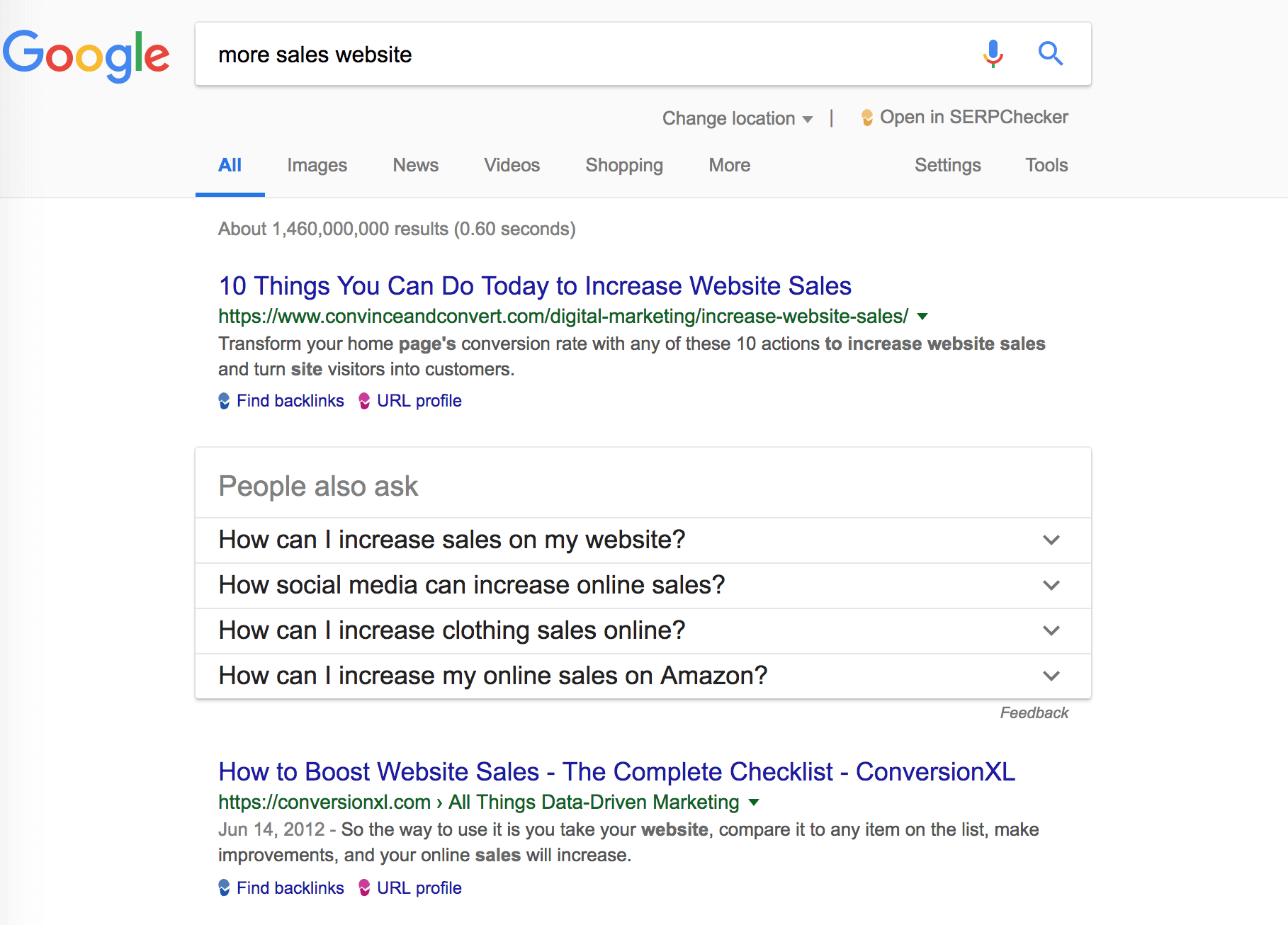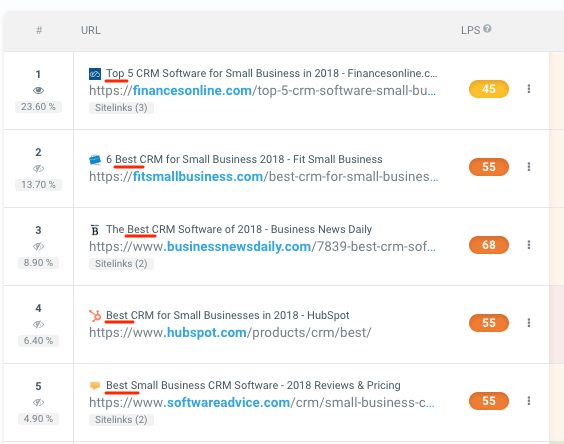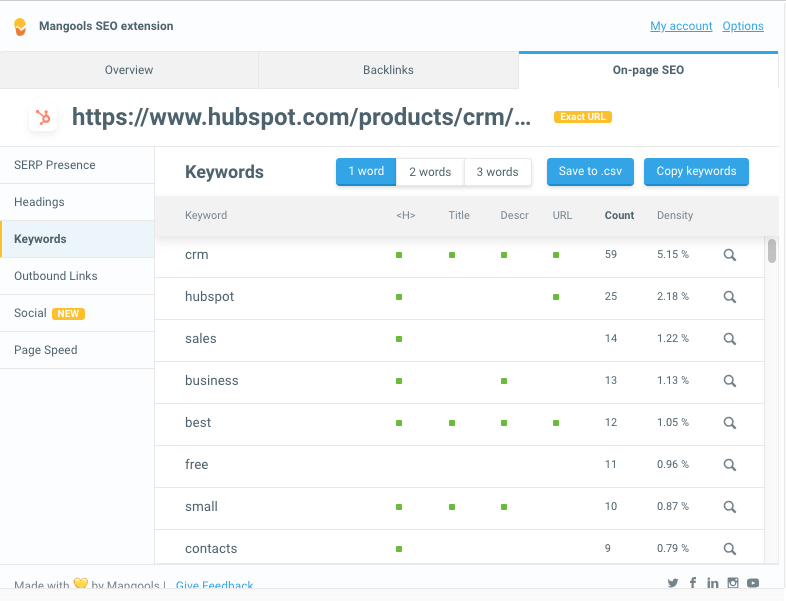What if I told you that to see your content ranking well, you wouldn’t have to rely on luck or Google’s mood on that day?
Or that to write a well-optimized content, all you’d have to do is to uncover just two pieces of information? And that you could find both of them in the SERP data easily?
I don’t think you’d believe me.
What two insights could guarantee your copy to rank in organic search results, after all? You’ll find that out in just a moment.
However, there’s something we absolutely must address first…
What the heck happened to SEO?
You know, back when I started in the industry (around 2010, if you needed to know), writing SEO copy was so darn easy. I mean, to see your content skyrocket in SERPs, you just had to:
- discover a particular keyword your audience used,
- make sure you include that phrase on a page a couple of times, and
- build some links to boost the page’s authority.
Sure, I may have simplified the process a little. But it really wasn’t that far from what I described above.
Fast forward to today…
For starters, keywords hold just a fraction of the power they once had. Today, your target audience would hardly use the same phrase to find your content.fg
Today, keyword research is different than it was 10 years ago. You should focus on topics instead of single keywords.
Now users would ask Google questions instead. Others would describe the object of their search. And many would simply type any scraps of information they have about what they’re looking for.
Like this:
The catch? They’d all expect Google to deliver relevant and valuable information nonetheless.
(Given all that, it really is no surprise how often the search engine algorithm is changing. It needs to deliver on the evolving users’ needs continuously, after all.)
What’s more, users would have different reasons for researching information too. And to rank, your content would have to deliver on that need as well (more on this in just a second.)
Finally, factors like their location, search history, and countless others would affect the search results. All of which poses a serious challenge for writing content to rank, right?
How to write copy for the new search behavior
Remember the two insights I mentioned at the beginning of this guide? We’re going to talk about them now.
Because you see, to write content that could shoot straight to the top of the search results, you first need to discover two things:
- the search intent – the goal of a person searching for this information
- the relevance of the content – the characteristics of content Google ranks for the topic already
Let’s go through them in detail.
1. The search intent
The term relates to a reason why someone conducts a specific search in Google (or any other search engine, for that matter)
That reason determines what type of information would satisfy it.
Being aware of it, Google has put an enormous amount of work to be able to determine the search intent. And in turn, promote pages promising to deliver that information in the SERP.
Simply.
So, what goal someone might have on Google?
| SEARCH INTENT | WHAT IS IT USED FOR? | EXAMPLE |
| Informational | To find new information | “how to write better content” |
| Navigational | To get to a sprcific online property | “Mangools blog” |
| Transactional | To find and buy products | “buy asus laptop” |
| Commercial | To research future purchases | “best laptop for students” |
Understanding why someone would search for information helps you decide how to approach your topic.
Should you write a blog post? Or maybe create a long-form content? Focus on describing your product or focus on its features?
(Read more: What is search intent?)
2. Content relevance
The first insight – the search intent – revealed why someone would look for specific information.
This one tells you what content Google prefers to rank to satisfy that intent.
Which, in turn, reveals how you should structure and format your content, from a content type you’d use to what information or advice you should offer. Analyzing top ranking pages tells you what to include on a page to help it rank.
Let me show you how to do it.
How to use SERP data to identify intent and relevance
Below you’ll find the exact process I use when writing SEO content for my clients. I’m going to use a test keyword – “small business CRM”.
We’re going to analyze the keyword first. Then, look for the search intent behind it. And finally, evaluate pages that currently rank for this keyword to learn what content could rank there best.
Step #1. Keyword Analysis
I begin by assessing the value of the keyword. Doing so requires nothing more than running it through a keyword research tool to gain some insights about it.
And in the case of our test phrase, I can see a significant interest (2112 searches) and commercial value ($46 cost per click) behind it.
So, off to a good start.
Side note: Another metric worth paying attention to is the keyword difficulty. Although I suggest you to consider it in the context of the actual SERP, rather than as a stand-alone metric.
Step #2. SERP Analysis
Next, run your keyword through the SERPChecker. You’ll find the information you need there.
So, here’s the result for “small business CRM”.
Before we go through different information on it, let’s chat about any assumptions you may have about the keyword quickly.
Because if you ask me, I’d imagine that searching for “small business CRM” would reveal pages of companies offering such software. But that’s not the case with this SERP, is it?
Even though it features two CRM companies – Hubspot and Insightly – the SERP doesn’t include any of their product pages. In fact, looking at the ranking pages, most ranking pages have something else in common:
They include a list of CRM vendors.
Look, these are the top five pages:
See? They all promise to show you some best small business CRM products.
The above tells me that Google, most likely, considers this to be a commercial phrase.
According to the search engine, anyone searching for this keyword would want to discover CRM vendors and compare their offering.
And so, based on the above, I know that to rank for this phrase, my content would have to target its intent and deliver similar information to the others in SERPs.
Fun fact: Hubspot uses this approach in their SEO strategy too. Note that, in spite of offering a CRM product themselves, they target the phrase with a list of best CRM vendors.
And so, as the first thing, look for the types of information Google displays at the top of SERPs. This way, you’ll identify the intent behind your keyword. Or at least, the intent Google considers for it.
But that’s not all.
I go deeper. I analyze what types of content rank on page one.
It’s simple in the case of our test keyword. Most of the ranking pages are blog posts. But you may find that other phrases return different content types. If that’s the case, focus on the top five results, and target a similar content type.
Evaluate other information in the SERP
Featured snippets, people also ask, related searches and other information Google displays could reveal more about what content to write for your keyword.
For example, the answer box suggests the opportunity to appear on the position zero.
The “People also ask” section will show you the most common questions associated with your keyword.
So, will “searches related to…” and many other SERP elements.
Review the SERP thoroughly to collect all this information.
Look at the common words in search listings
Finally, skim through the top-ranking pages’ headlines. Look for common words or other patterns that you could replicate in your content.
For example, all pages ranking for our test keyword take a common approach. See?
Step #3. Content Analysis
As the last thing, visit top-ranking pages to analyze their content’s structure.
In particular, evaluate:
- What subheadings they include. Do they push the keyword or focus on engagement?
- How long is the content?
- How deep do they go into the topic?
I admit – this is a manual process. And it does require some training. But keep going. In time, you’ll learn to spot common threads on those pages.
Finally, spot any additional terms related to your keyword they include
You can do this manually, but I prefer to use the Mangools Chrome extension.
One particular feature comes in handy here – the On-Page SEO analysis of keywords on any page. Here’s how it looks for the Hubspot’s list of best CRMs.
Note how you can switch between one, two and three-word keywords. Use it to get the full picture of how they optimized the page.
Cool, huh?
And that’s it…
Now you know how to discover the search intent behind your keyword. And also, what the content you need to write to rank for it.










